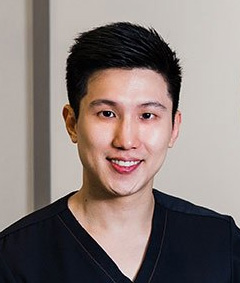Botulinum Toxin Vs Fillers
Botulinum Toxin and fillers are both popular aesthetic treatments in Singapore. These 2 treatments have not lost its popularity despite newer developments in aesthetic medicine.
Both botulinum toxin and fillers are injection treatments. However, they work differently. Let’s compare these two treatments in terms of their uses, effectiveness and safety.
Contents
Botulinum Toxin versus Fillers: Differences
| Botulinum Toxin | Fillers | |
| What is it? | Botulinum toxin is a neurotoxin. | Fillers are bio-degradable gels. |
| How does it work? | Botulinum toxin temporarily relaxes muscles. | Fillers add volume. |
| Where is it used? | Botulinum toxin is a neurotoxin which is used to treat dynamic wrinkles like frown lines, crow’s feet, forehead lines and bunny lines. By reducing muscle activity around these lines reduces the appearance of dynamic wrinkles and prevent the formation of static lines. Botulinum toxin can also be used to reduce square jaw muscles to give you a slimmer looking face. However, Botulinum toxin is not useful in treating lines that are static as the underlying cause of static lines is secondary to collagen depletion. | Dermal Fillers are injectable gels injected to replace volume loss as we lose collagen when we age. For example, fillers can be used to treat deep lines like nasolabial fold. There are different types of types of fillers, which can be broadly categorised to HA fillers and collagen stimulating fillers. |
| Are the results immediate? | Results of botulinum toxin injections can be seen within a week for most people. Usually, a single session is enough to produce the desired results. It is common to have to ‘touch-up’ Botulinum toxin 2-3 weeks after injection to correct any asymmetry if present. | The results of a filler can be seen instantly but will take a week for two to see the ‘stabilised’ results. Further adjustments of fillers may be necessary to achieve the desired results. |
| How long do results last? | Botulinum toxin injections can last for about 3-4 months for most people. With that said, results of Botulinum toxin injection extend beyond how it works as a neurotoxin. With repeated injections, the antiaging and prevention of development of static lines. | Fillers are usually longer lasting. The longevity of fillers for most HA fillers last for about 12 months and collagen stimulating fillers can last up to 3 years. However, the effects of fillers usually start to diminish before the fillers are ‘gone’. Results of fillers done at areas with lots of movements, for example, the undereye, do not last as long as the same filler that is done for the cheeks or chin. |
| Risks/ Side effects? | Risk of bruising maybe higher for Botulinum toxin as multiple injection points are usually required for 1 area. Bruising for fillers are less common and usually has minimal downtime. Botulinum toxin can diffuse beyond the area of its supposed action and cause a ptosis. For individuals who are very reliant on their forehead muscles to open their eyes are at a higher risk of developing such risk. Fortunately, the action of Botulinum toxin only last for 3-4 months and the problem will resolve. Other uncommon side effects of botulinum toxin includes infection, allergic symptoms like itching, wheeze, rash and dizziness. | Irreversible side effects like blindness and skin necrosis are possible when fillers are injected into the blood vessels, occluding blood supply to the respective areas. Generally, good injection technique and avoiding ‘danger’ zones minimises this risk. Treating static lines with fillers has considerable risks. Usually, sharp needle is used for filling up this lines superficially. When a sharp needle is used, it has a higher risk of puncturing and injecting fillers into the blood vessels as compared to using a cannula causing complications as above. Another risk is lumpiness. As fillers are injected superficially under the skin to fill these lines, the risk of uneven surface and lumpiness is a concern. Any unnatural appearance of fillers can stay on for more than a year if untreated. HA fillers can be treated with hyaluronidase to ‘dissolve’ the filler. However, for collagen stimulating fillers that are not ‘dissolvable’ can result in a semi-permanent unwanted effect. |
| Price | The price of Botulinum toxin depends on the area of the face being treated. Depending on the size of the muscle that is treated, the dose varies. To treat small areas like frown lines and crow’s feet, it can take about 10 -20 units for each area. | There are different types of fillers. Each syringe of fillers cost from $700 to $2000, depending on the longevity and brand. It is common to use more than 1 syringe of fillers in a session. It is necessary to discuss your desired outcome and concerns extensively so that your doctor can give you a better estimate in the number of syringes required. |
Can Botulinum Toxin treat nasolabial lines?
In my opinion, it would not be my first recommendation. Botulinum Toxin of the jaw muscles can in fact worsen the appearance of nasolabial folds. Whilst dermalift, a special technique to inject botulinum toxin into the dermis can result in temporary tightening of the skin and lift, the results are only temporary lasting about 3 months. In ageing patients who have lost collagen and volume, fillers would be a more appropriate treatment as the results will be more obvious and longer lasting.
Can Botulinum Toxin treat static lines?
Static lines are formed when botulinum toxin was not done early enough. The cause of static lines is a consequence resulting from a combination of repeated facial expression and depletion of collagen. Botulinum toxincan prevent static lines but cannot be used to treat static lines. Fillers can be used to treat static lines but not without its risk of vascular compromise.
Will I look worse after I stop Botulinum toxin?
In fact, repeated Botulinum toxin injections are useful in preventing static lines and is a treatment that prevents ageing. When you stop Botulinum toxin treatment, your facial muscle will resume full power gradually and the normal ageing process takes over. Therefore, you shouldn’t look worse when you stop Botulinum toxin.
What is recommended to treat crow’s feet?
For dynamic lines like crow’s feet, I would first recommend Botulinum toxin injections. Fine lines and static lines around the eyes can be improved with mildly ablative lasers, fractional RF and collagen stimulating rejuran injections.
What is recommended to treat frown lines?
Similar to crow’s feet, dynamic frown lines should be treated with Botulinum toxin injections first. Static lines can be improved with mildly ablative lasers, fractional RF and collagen stimulating rejuran injections. As static frown lines tend to be very deep, some doctors propose treating it with fillers. However, this is a ‘danger’ zone and there is a risk of skin necrosis of the forehead.
In summary, Botulinum Toxin and Fillers work very differently and in most instances, both treatments are performed concurrently to achieve best results.
It is recommended to have a formal face to face consult with an expert medical doctor to diagnose the problem and get the suitable treatment.









